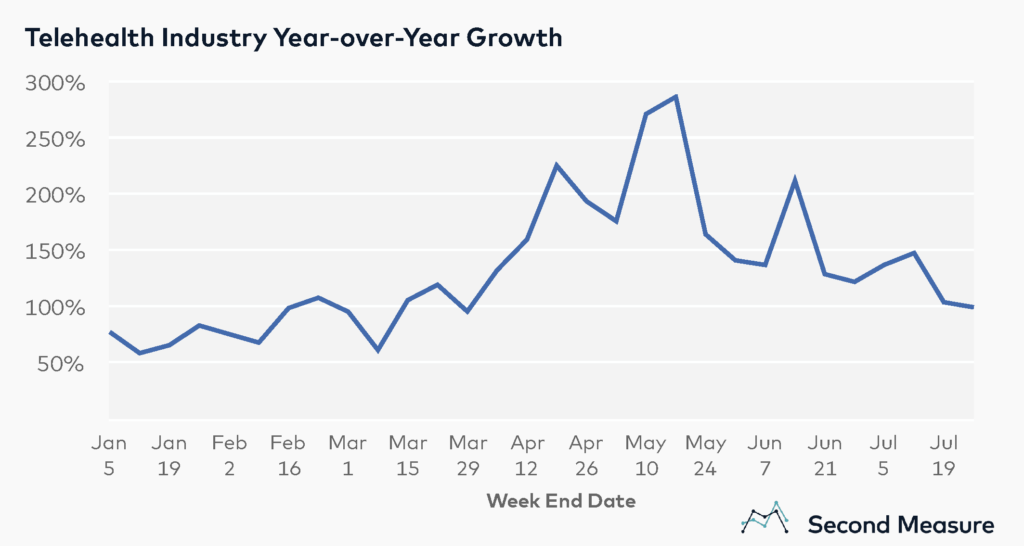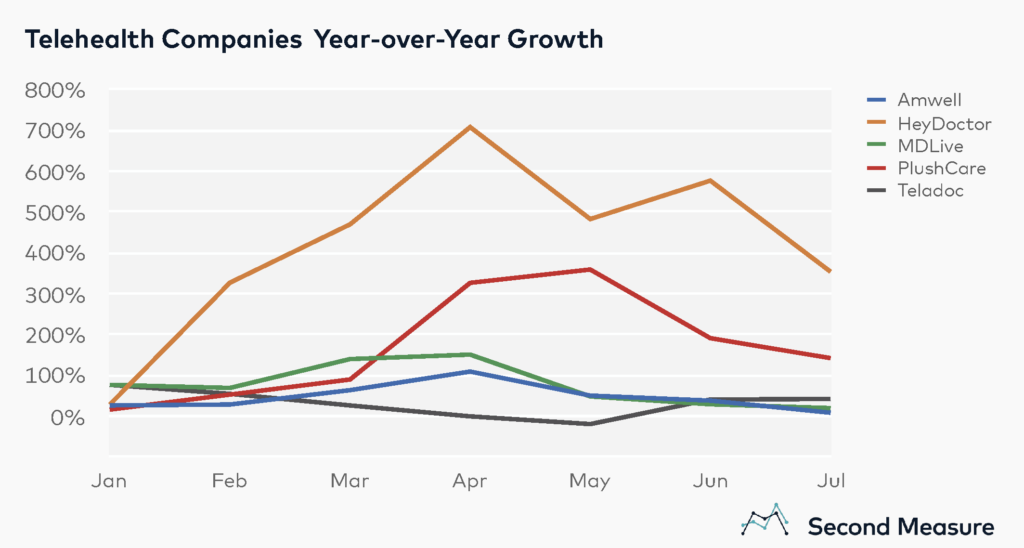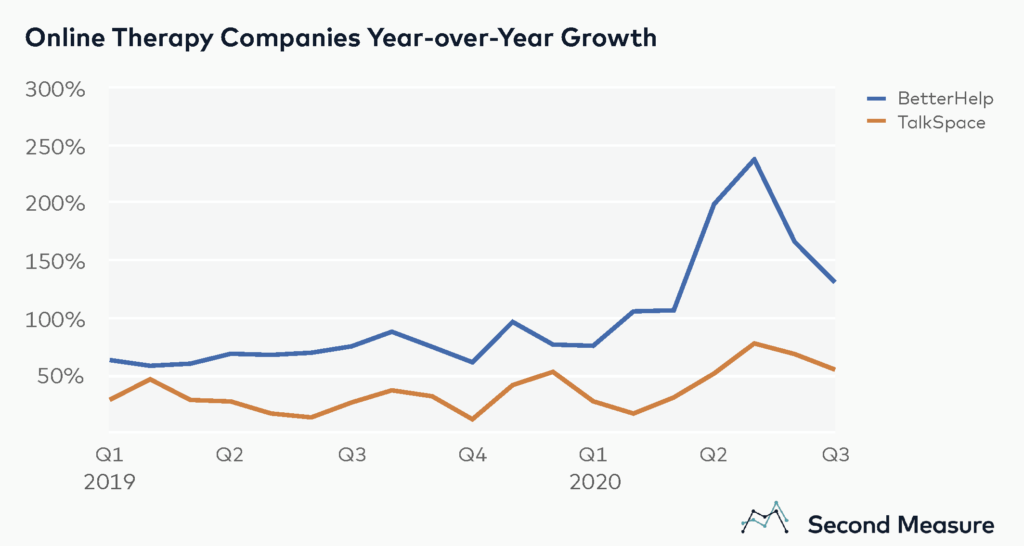NOTE: Bloomberg Second Measure launched a new and exclusive transaction dataset in July 2022. Our data continues to be broadly representative of U.S. consumers. As a result of this panel change, however, we recommend using only the latest posts in assessing metrics, and do not support referring to historical blog posts to infer period-over-period comparisons.
COVID-19 has catalyzed sales growth in the telehealth industry, as patients turn to online doctors as a safer and more convenient way to receive medical advice. The industry has witnessed skyrocketing year-over-year growth since March 16, the week most states issued shelter-in-place orders, and has since sustained strong growth.

Year-over-year growth reached a five-year high the week of May 11, with sales up 287 percent compared to the previous year. In the weeks following, the industry has averaged weekly year-over-year sales growth of 150 percent.
Strong growth only sustained in states with looser COVID-19 restrictions
Our analysis found that, surprisingly, growth in consumer demand for telehealth services is higher in states with looser lockdown restrictions. In these states, that growth sustained well through the month of July. While all states showed a spike in year-over-year sales growth of around 100 percent in April, states where lockdown orders were strictly enforced showed less growth.

This difference is even more pronounced in July. In southern states like Florida, Georgia, and South Carolina—where restrictions were lifted early and businesses were encouraged to resume operations—year-over-year monthly sales growth stood at 191 percent in July. Meanwhile, in coastal states where lockdown regulations were strictly enforced, growth was down 64 percent that same month.
Telehealth winners and losers
Within the industry, clear victors have emerged, setting themselves apart from the competition. HeyDoctor leads the pack with year-over-year sales growth of 354 percent in July. In contrast, growth for that same month in 2019 stood at 144 percent.

Industry stalwart Teladoc saw solid year-over-year growth of around 42 percent in July, placing the company in the mid-range of the competitive set. Smaller players like MDLive and Amwell showed more modest growth of 20 percent and 8 percent, respectively, that same month.
Surge in demand for telehealth services includes online therapy

This increase in demand for telehealth services spans various areas within the healthcare industry, including online therapy. This area witnessed a surge in demand in the weeks following mandatory shelter-in-place orders, as lockdown began taking a toll on individuals’ mental health in the second quarter of this year. BetterHelp, a subsidiary of Teladoc, observed 238 percent year-over-year growth at its peak in May, while TalkSpace, an industry newcomer, observed 78 percent growth that same month.
